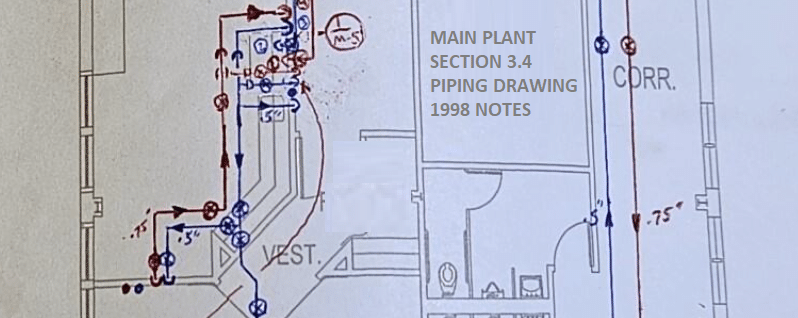Costly Downtime Due to Out-of-Date Piping Schematics
In the ever-evolving landscape of large-scale industrial facilities, the critical importance of operational reliability cannot be overstated. Yet, amidst the myriad factors that contribute to seamless operations, the often-neglected aspect of piping schematic accuracy holds immense significance. This article delves into the multifaceted challenges posed by outdated schematics, particularly in scenarios involving potable water contamination from cross-connections and emergency situations where the swift location of shut-off valves becomes paramount. By weaving in relevant statistics and exploring potential financial costs in greater detail, we aim to provide decision-makers with a comprehensive understanding of the urgent need to prioritize the regular updating of piping schematics.
The Practical Guide to Piping Schematics
Unknown Shut-off Valve Locations in Emergency Situations
In emergency situations, every passing minute translates into potential financial losses, with outdated schematics exacerbating the challenge. Statistics illuminate the average cost of downtime in industrial facilities, ranging from $1,000 to $100,000 per minute, contingent on factors such as industry type and the extent of the damage incurred. A more granular exploration of these costs reveals the intricate financial interplay, underscoring the need for swift response and accurate documentation. Consider a scenario where outdated schematics impede the rapid location of shut-off valves during a critical failure. The financial implications extend beyond immediate emergency repair costs. Prolonged downtime results in missed production targets, supply chain disruptions, and heightened customer dissatisfaction. An in-depth analysis of these secondary costs reinforces the argument for the timely updating of piping schematics as a proactive financial strategy.
“Statistics illuminate the average cost of downtime in industrial facilities, ranging from $1,000 to $100,000 per minute, contingent on factors such as industry type and the extent of the damage incurred.”

Unintentional Cross-Connections to Non-Potable Piping
The potential financial repercussions of a facility grappling with contamination due to outdated schematics are staggering. Beyond the immediate costs of regulatory fines and legal battles, the ripple effect extends to encompass medical expenses for affected personnel. An investment in regularly updated piping schematics is not merely a proactive measure against fines but a strategic financial decision aimed at preventing losses that could far exceed the initial expenses required for documentation maintenance.
Neglecting the importance of updated piping schematics is akin to playing a high-stakes game with potentially dire consequences. The statistics and nuanced exploration of potential costs associated with potable water contamination and valve location delays underscore the far-reaching financial ramifications of downtime, legal liabilities, and compromised safety.
The Financial Toll of Potable Water Contamination
Potable water contamination is not only a threat to human health but also a substantial financial risk for industrial facilities. Startling statistics reveal that up to 25% of waterborne disease outbreaks in industrial settings are directly linked to cross-connections and plumbing issues. Delving deeper into the financial implications, studies indicate that approximately 80% of businesses that experience waterborne illnesses due to contaminated water supplies face litigation costs, further emphasizing the tangible financial risks associated with inadequate documentation.

Take Aways:
In conclusion, the financial imperatives of investing in regular updates to piping schematics emerge essential priority for ensuring the sustained success of industrial facilities. The interplay between statistics, potential costs, and operational realities highlights the critical importance of accurate documentation.
Decision-makers must recognize that the initial investment in maintaining updated piping schematics is not just a prudent business decision but a holistic financial strategy. It serves as a proactive shield against regulatory fines, legal battles, and operational disruptions, thereby safeguarding both the operational integrity and financial health of the facility. By prioritizing the accuracy and currency of piping schematics, facilities can fortify their resilience, protect their personnel, and ensure enduring success in an increasingly competitive industrial landscape.


